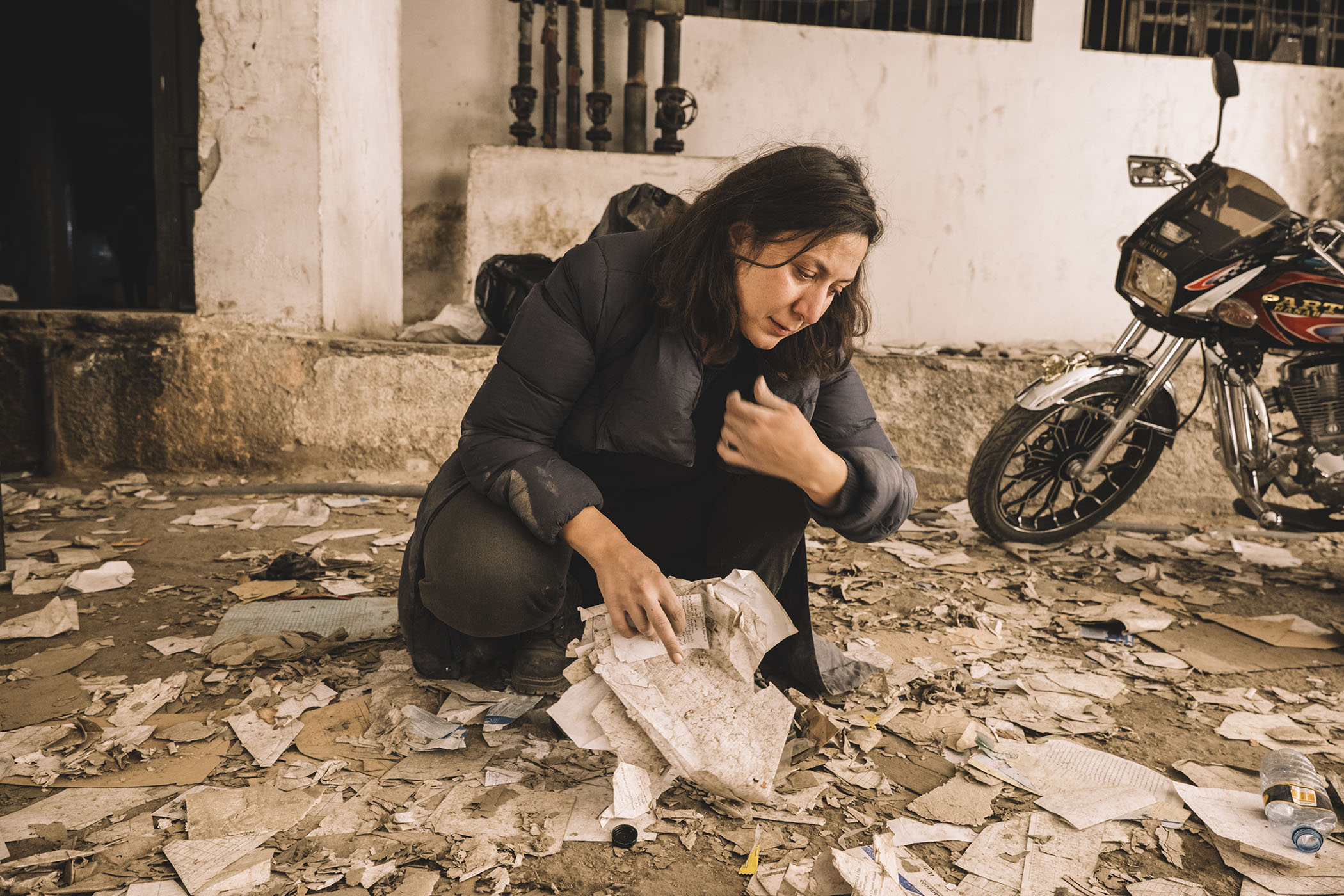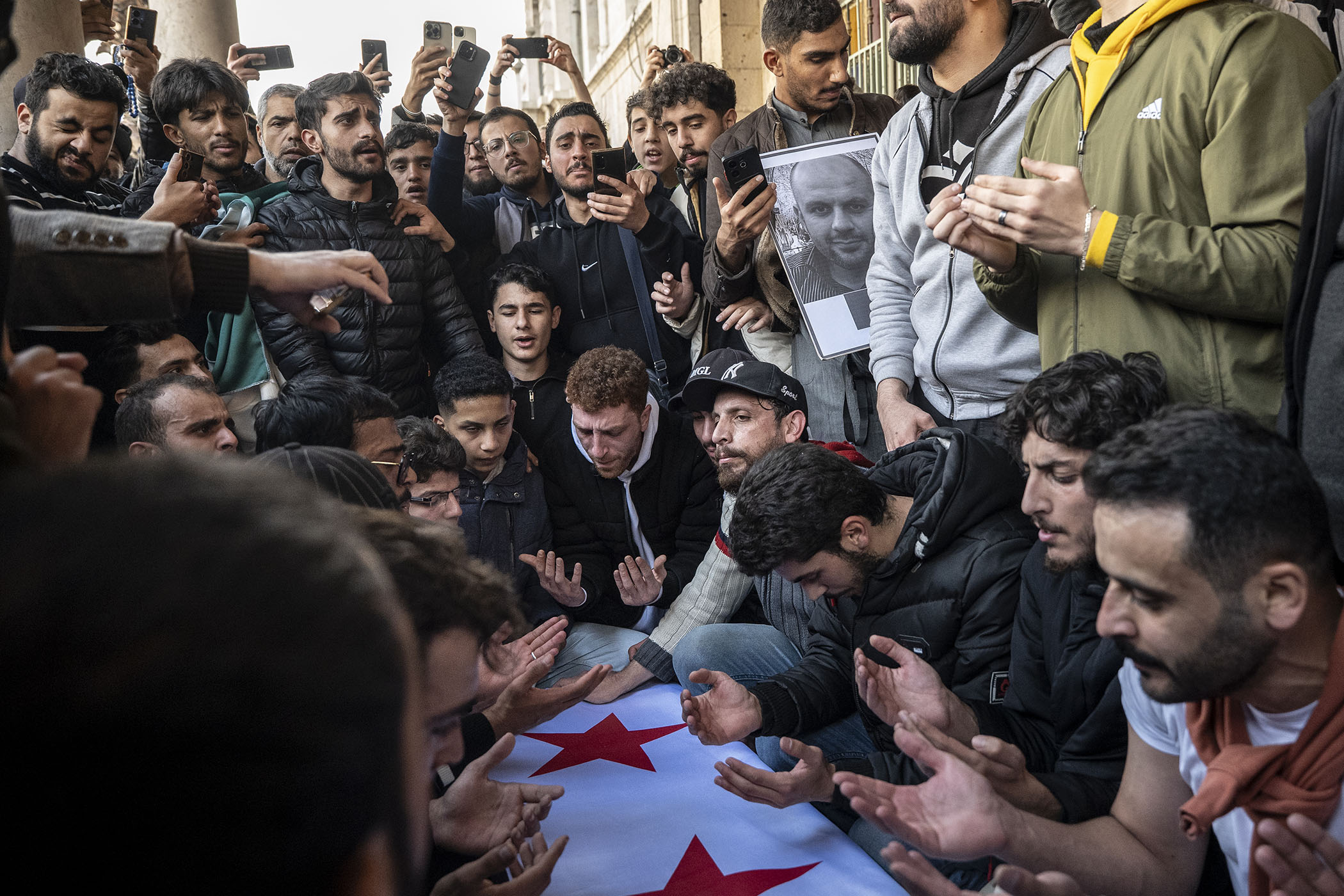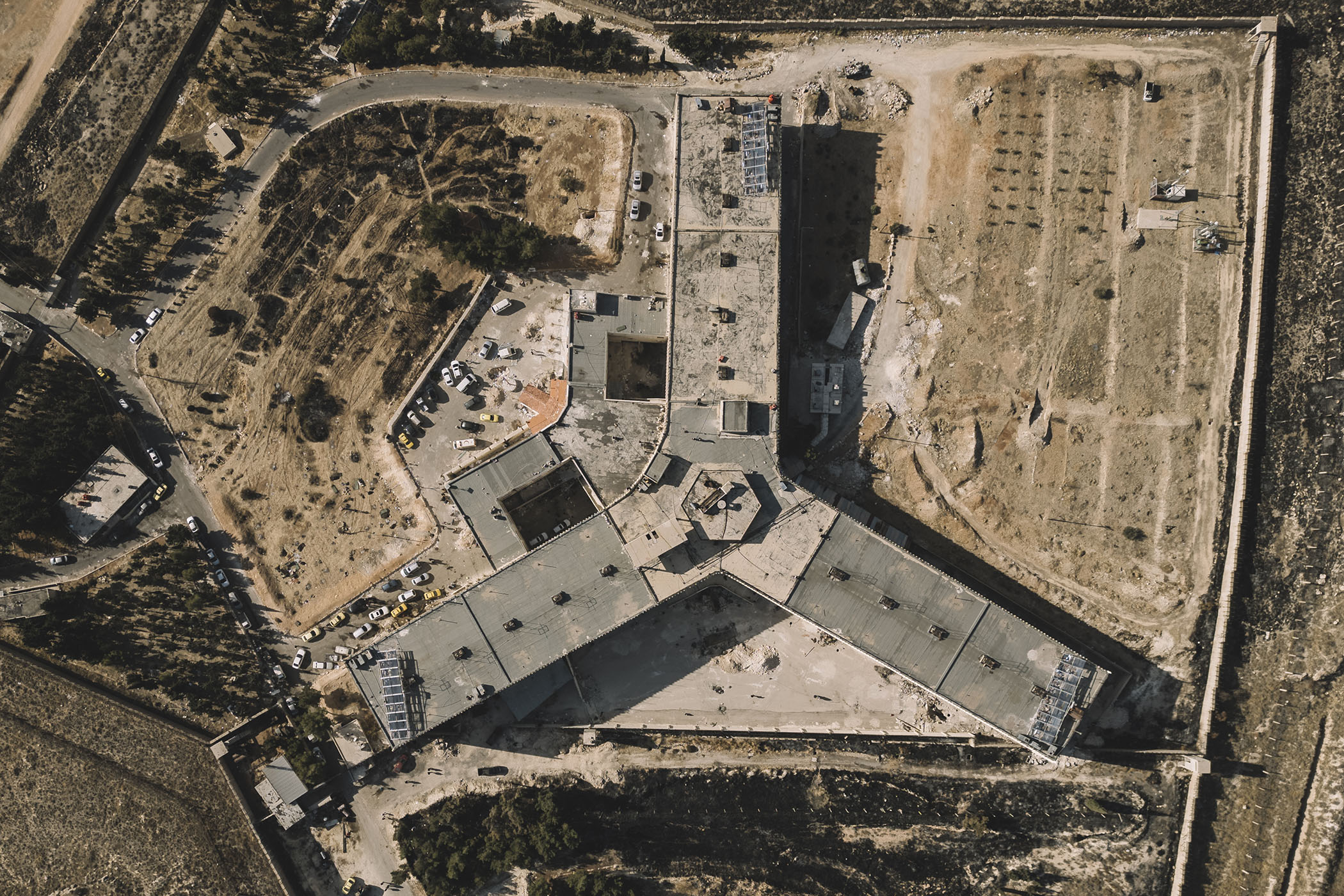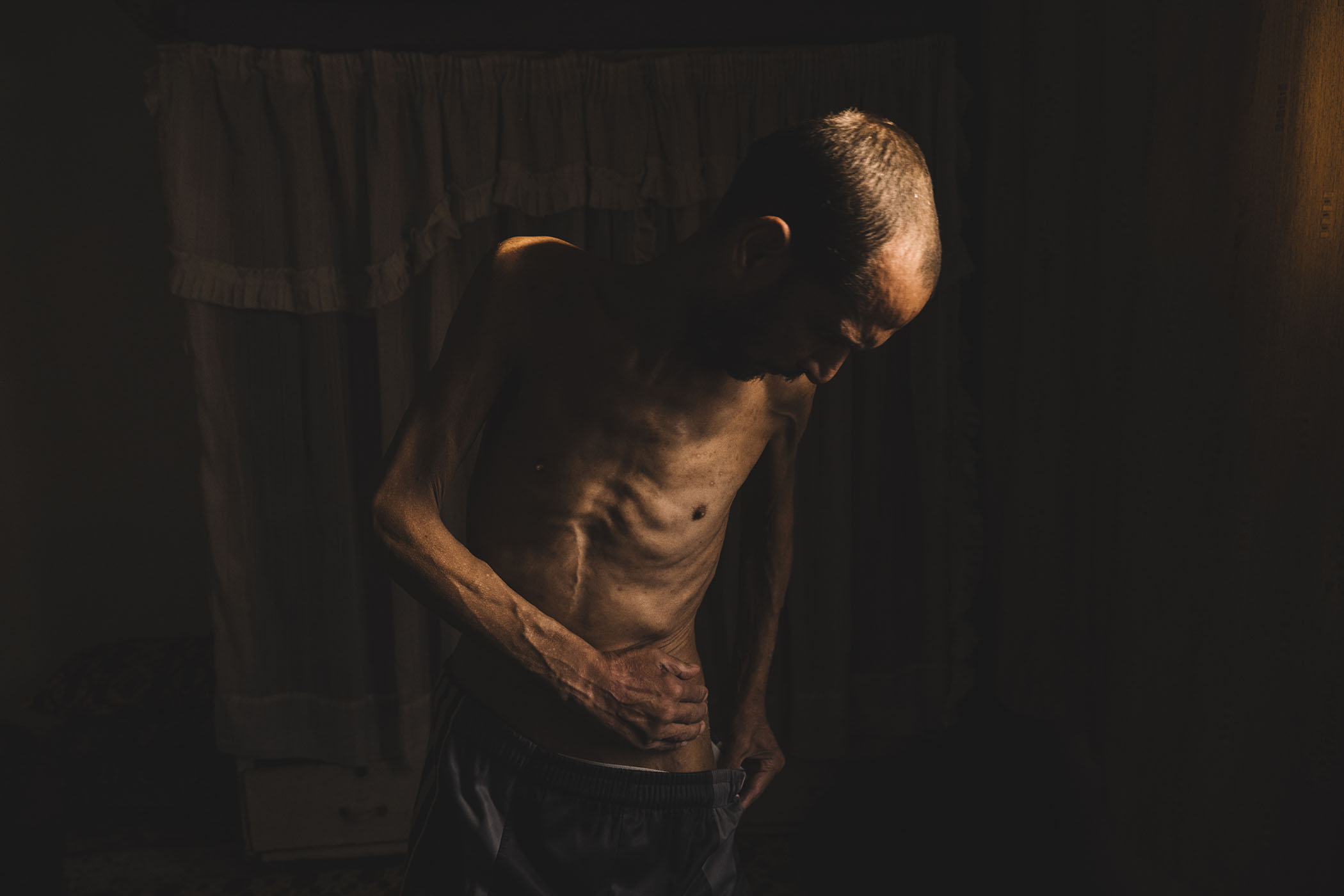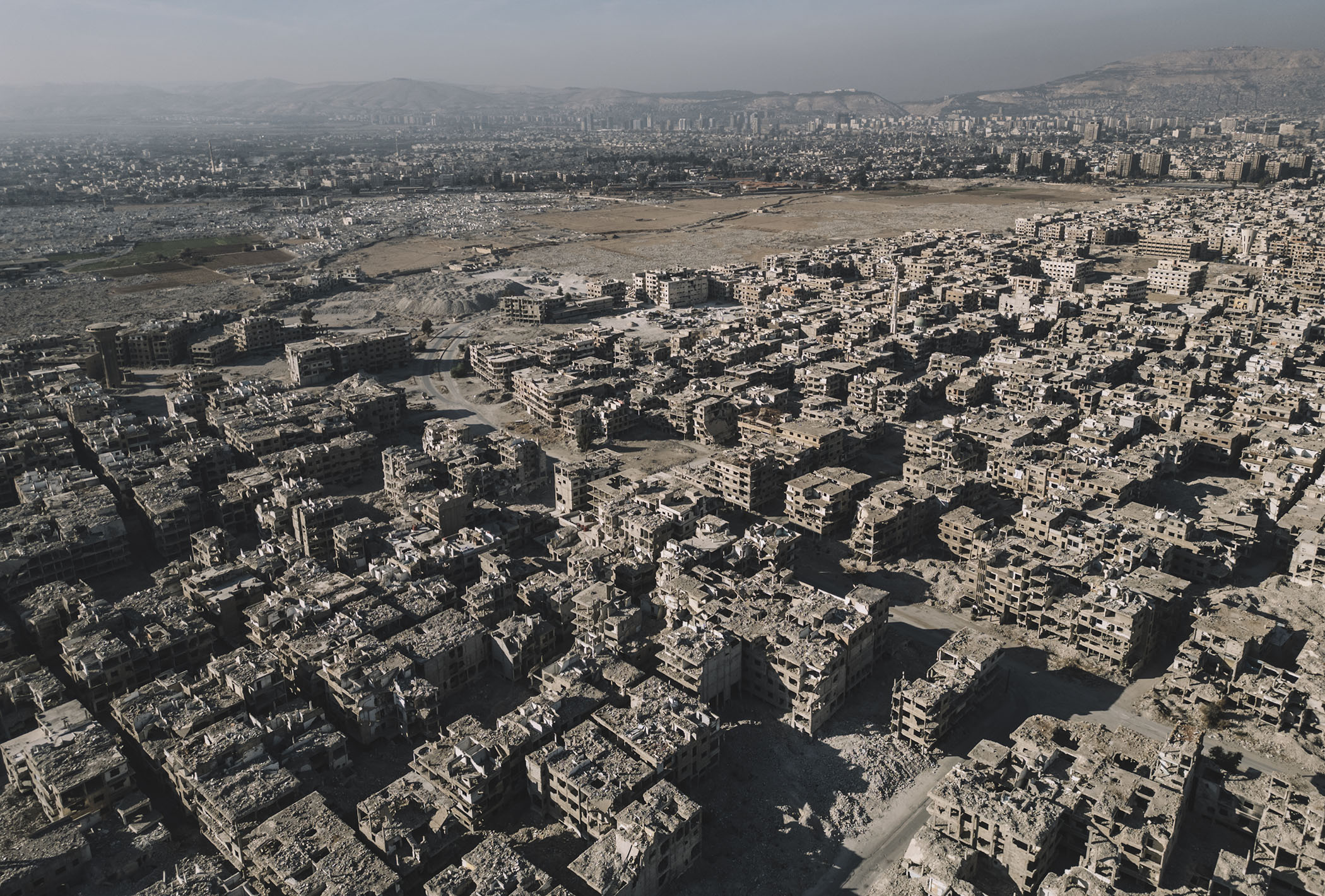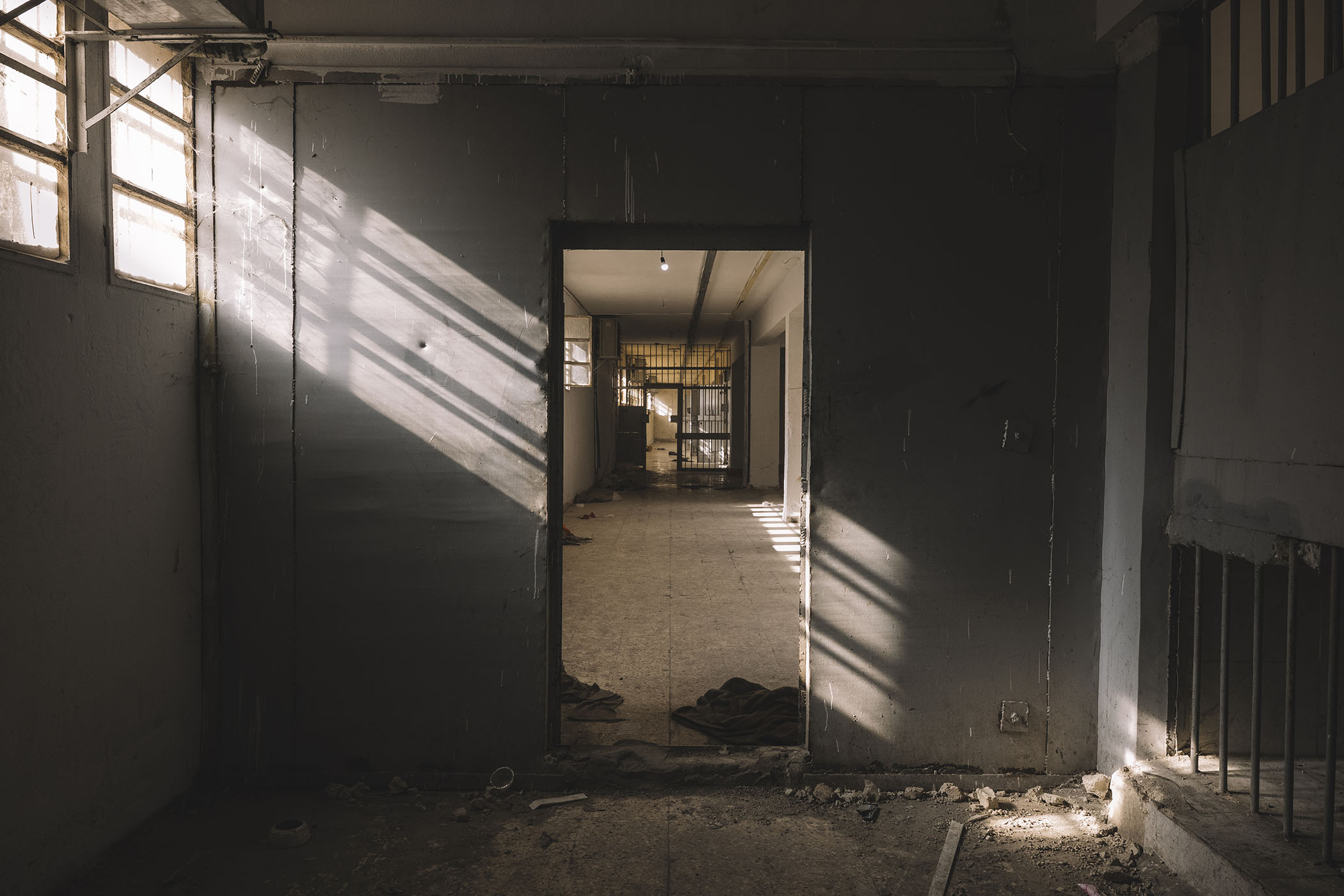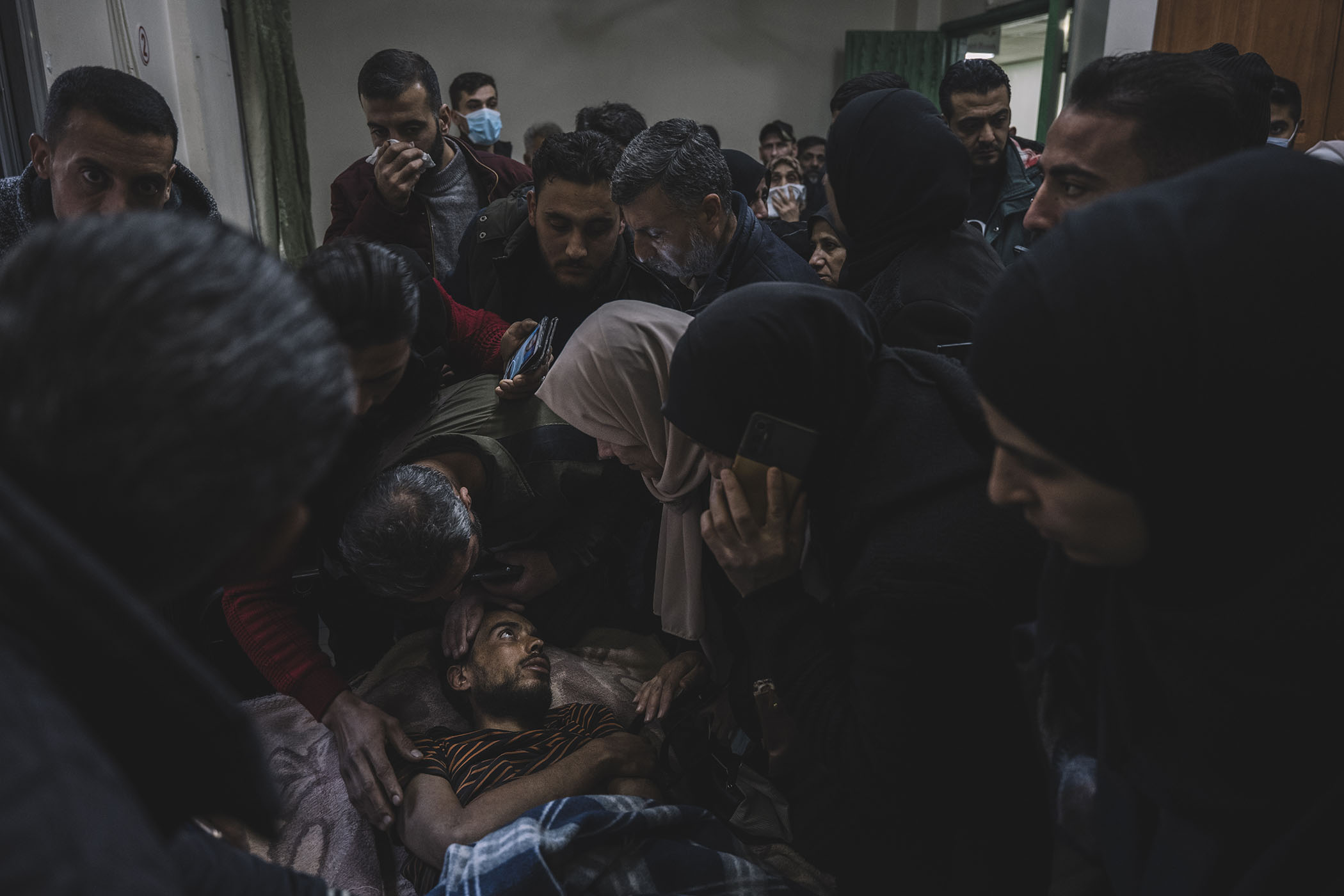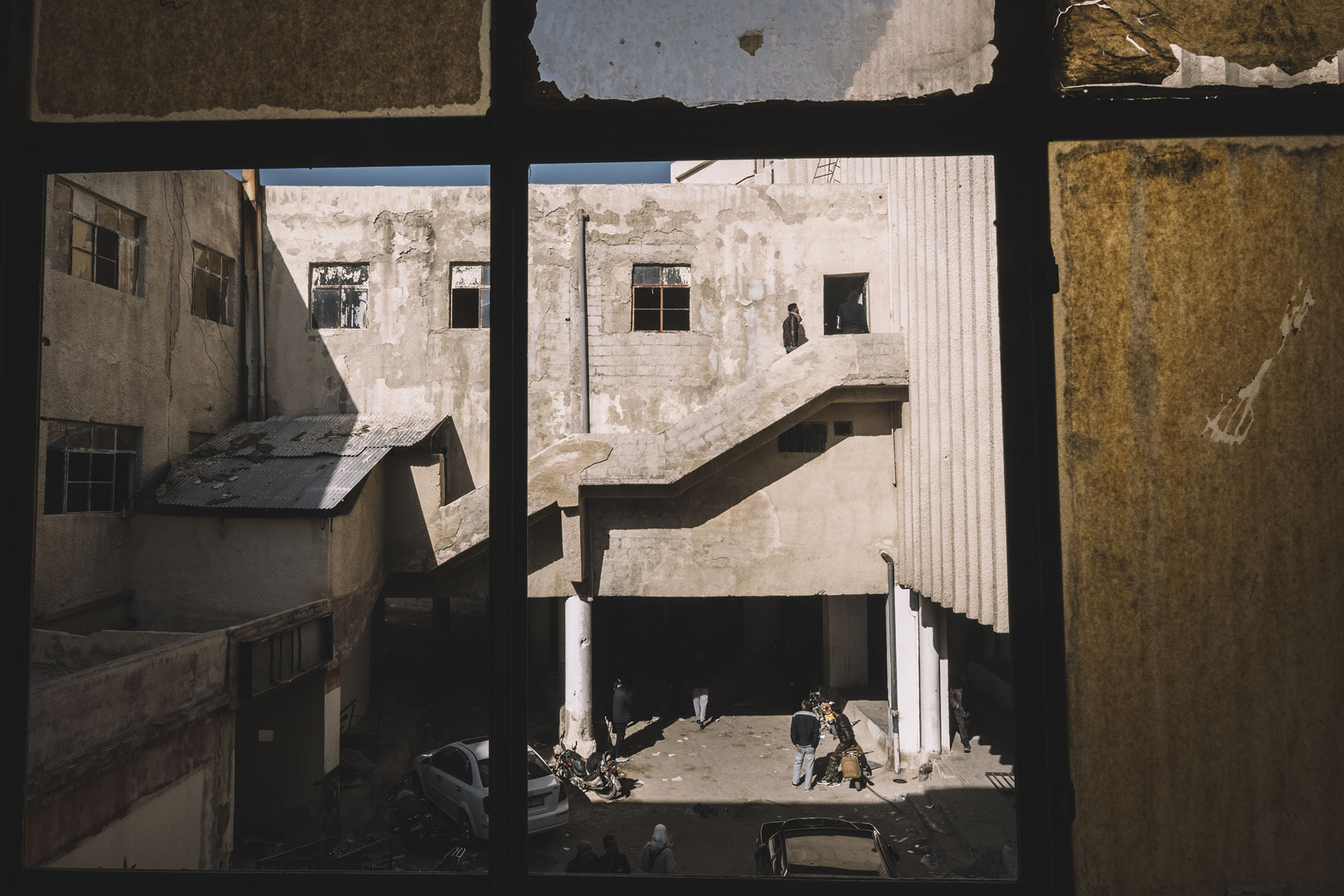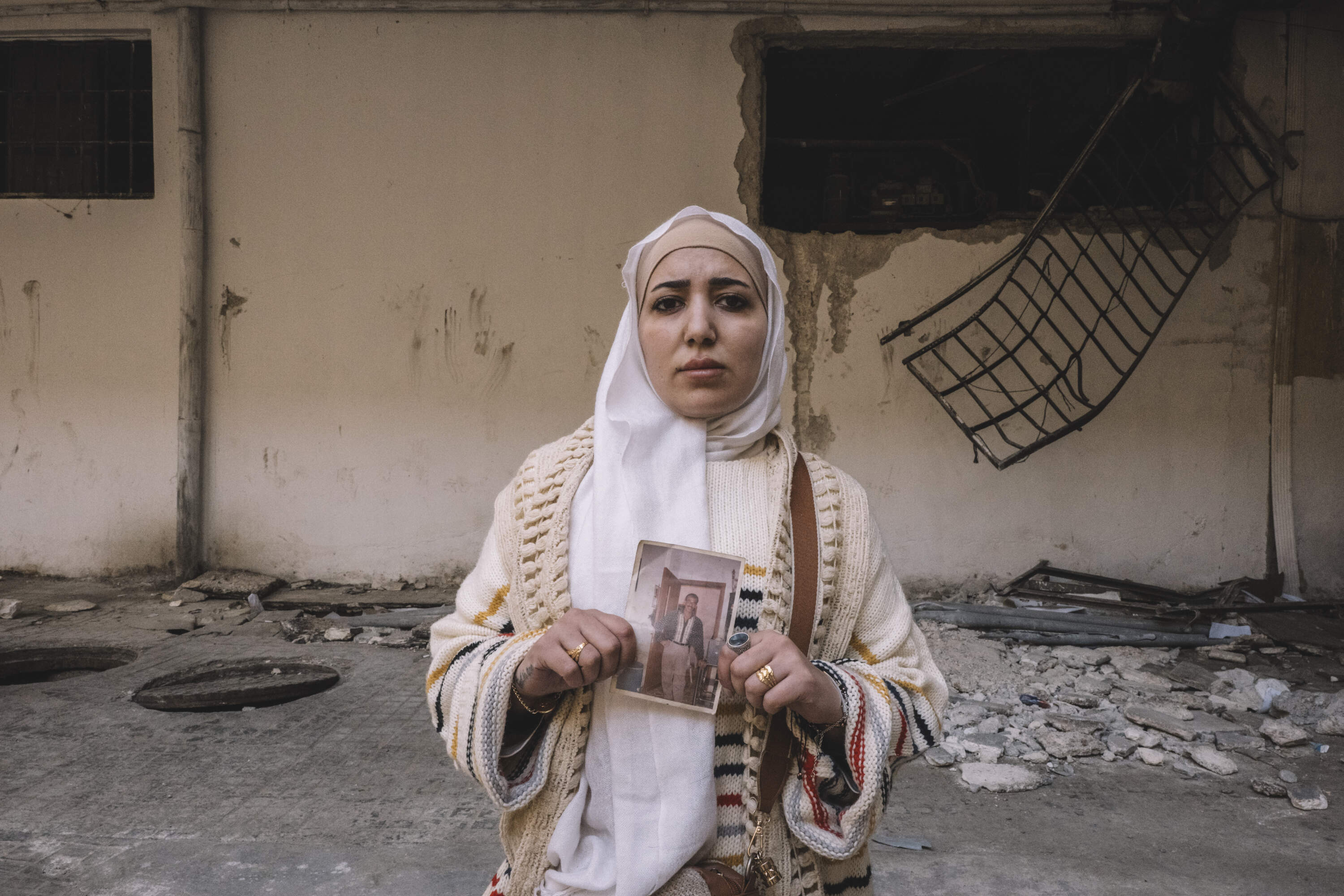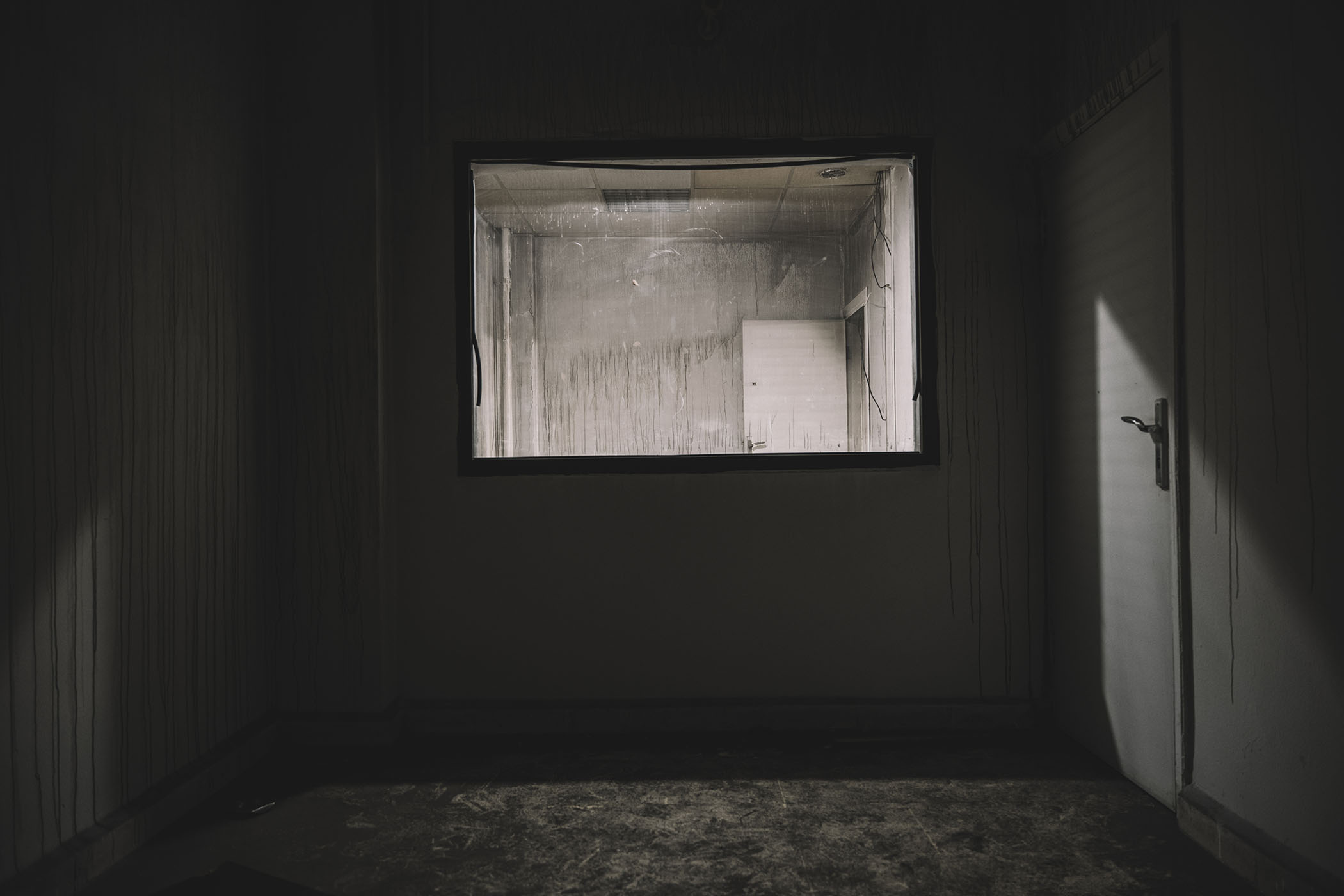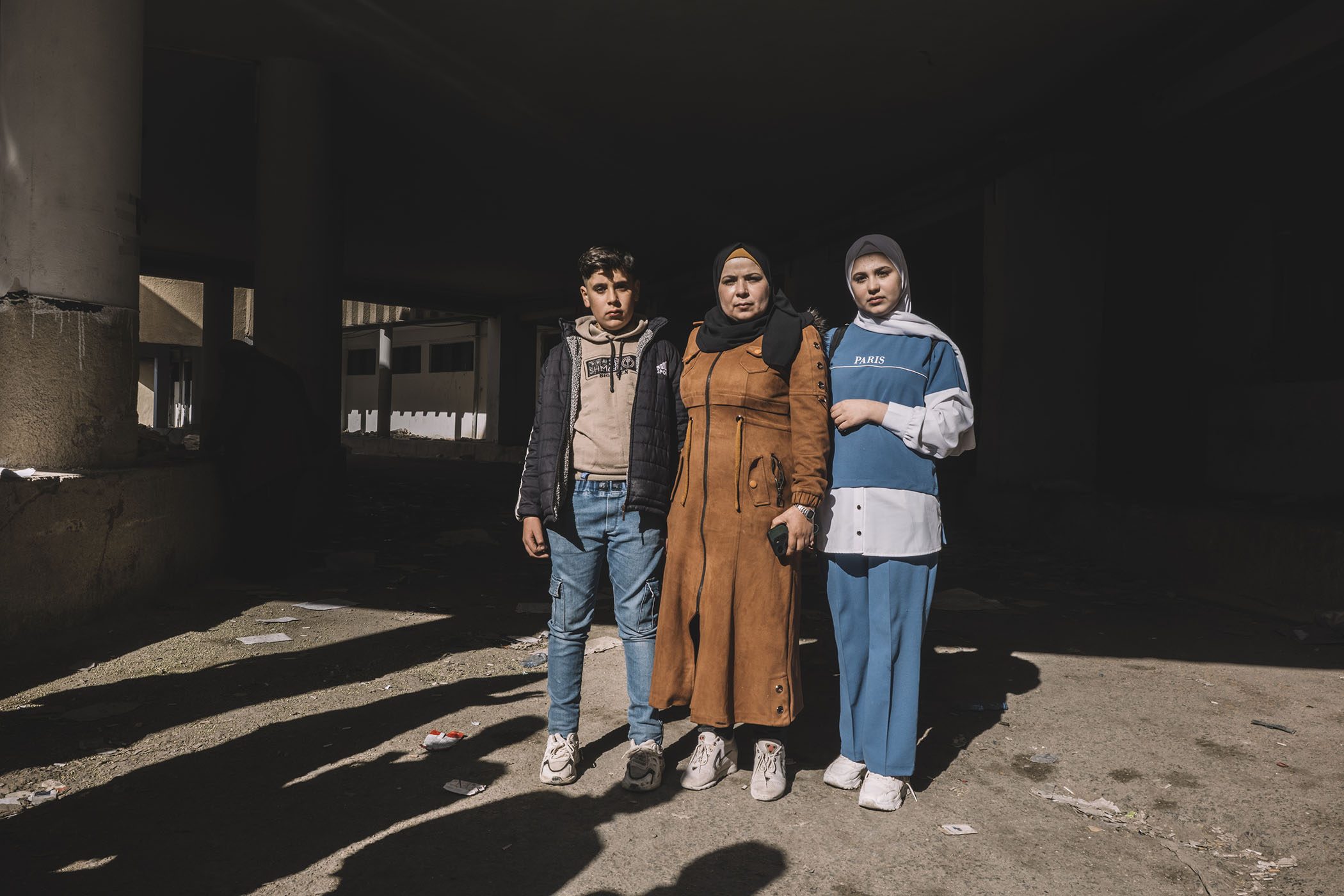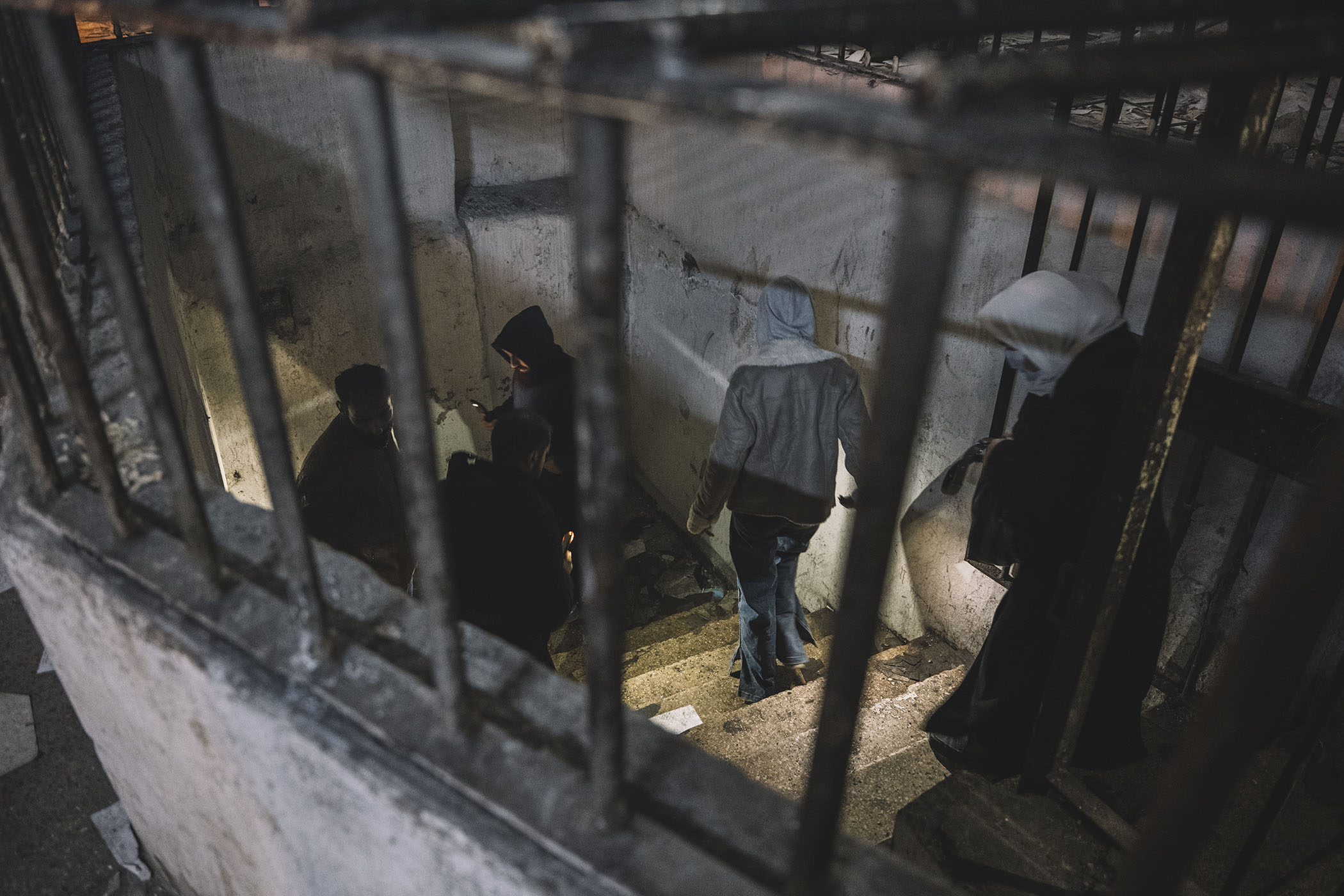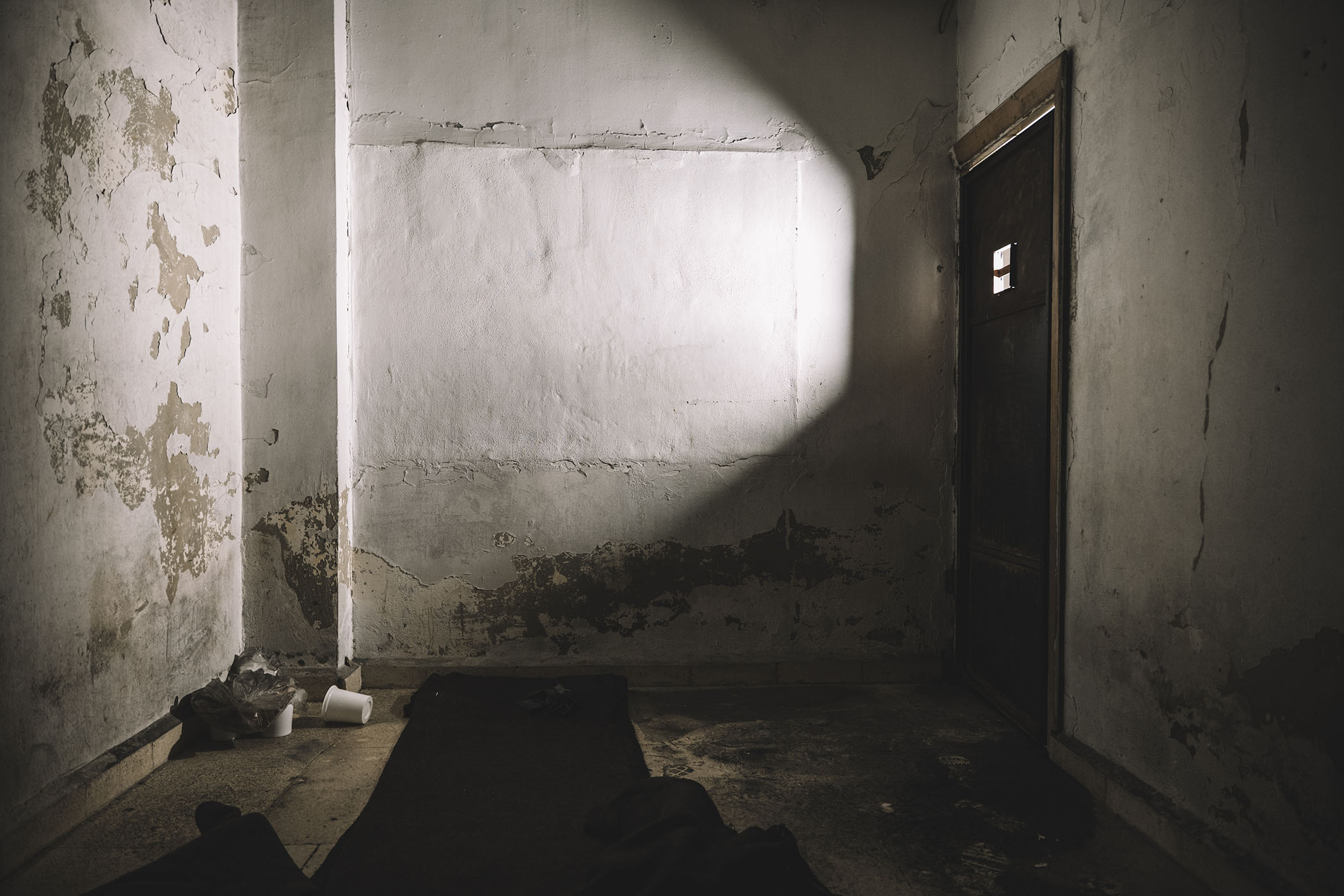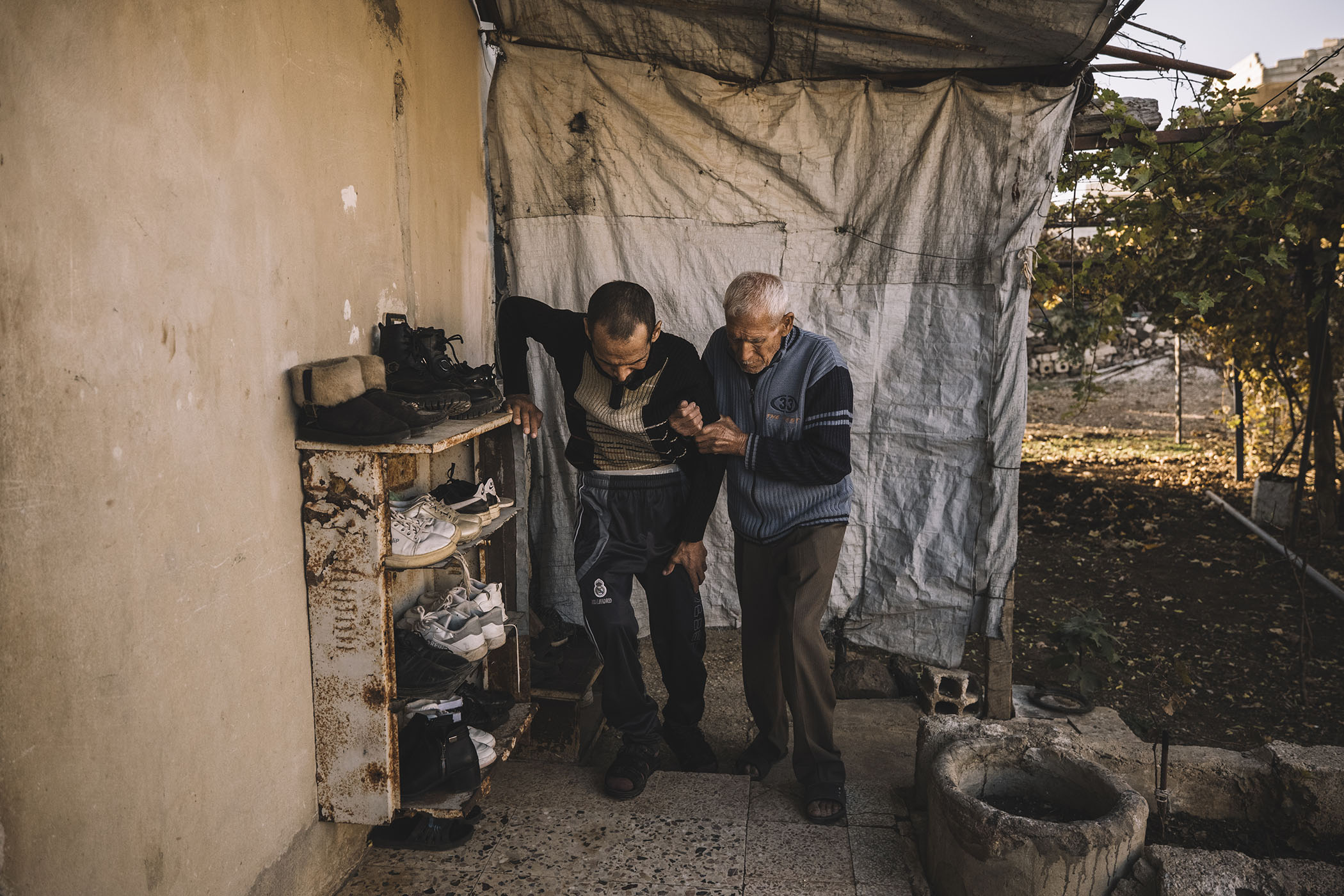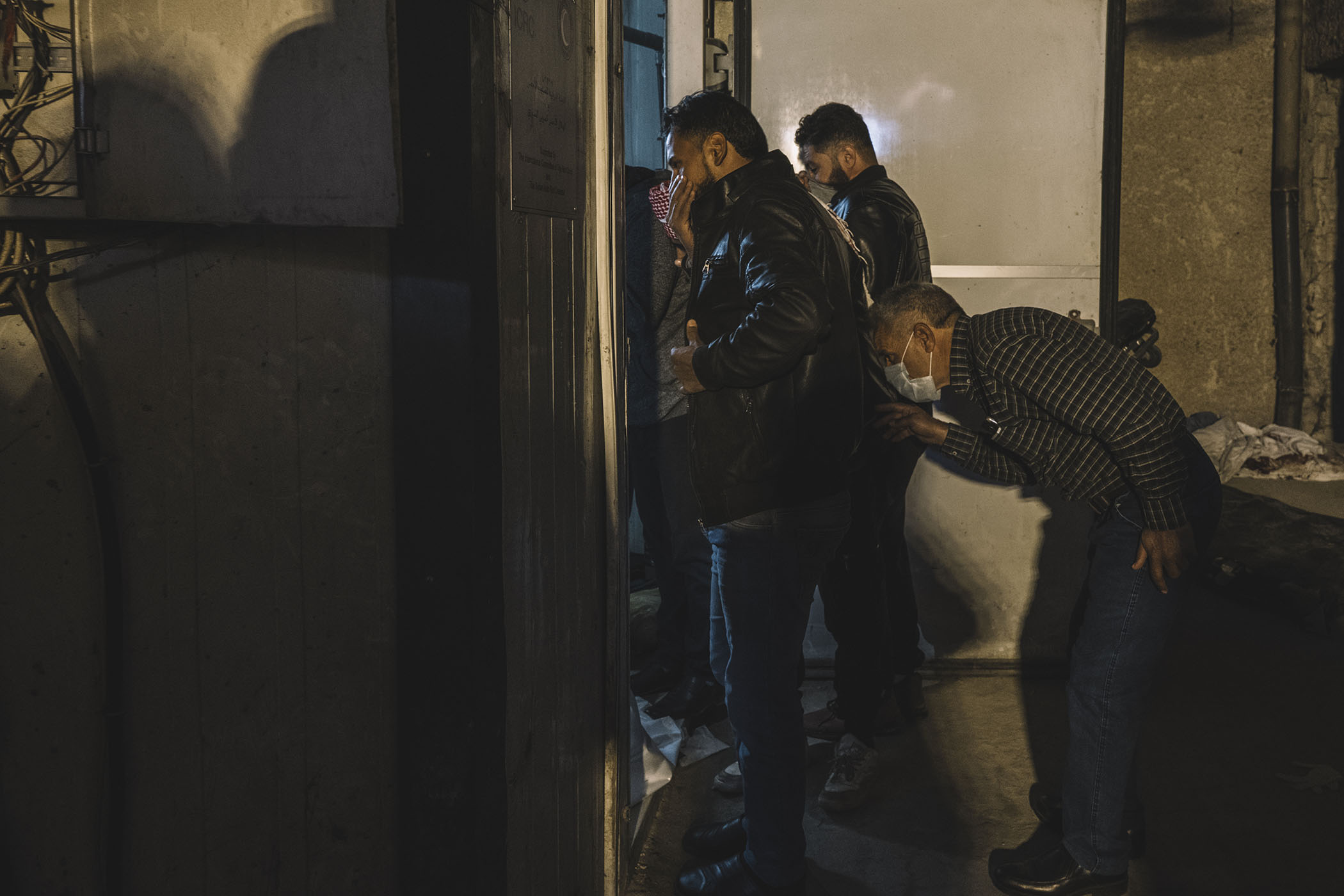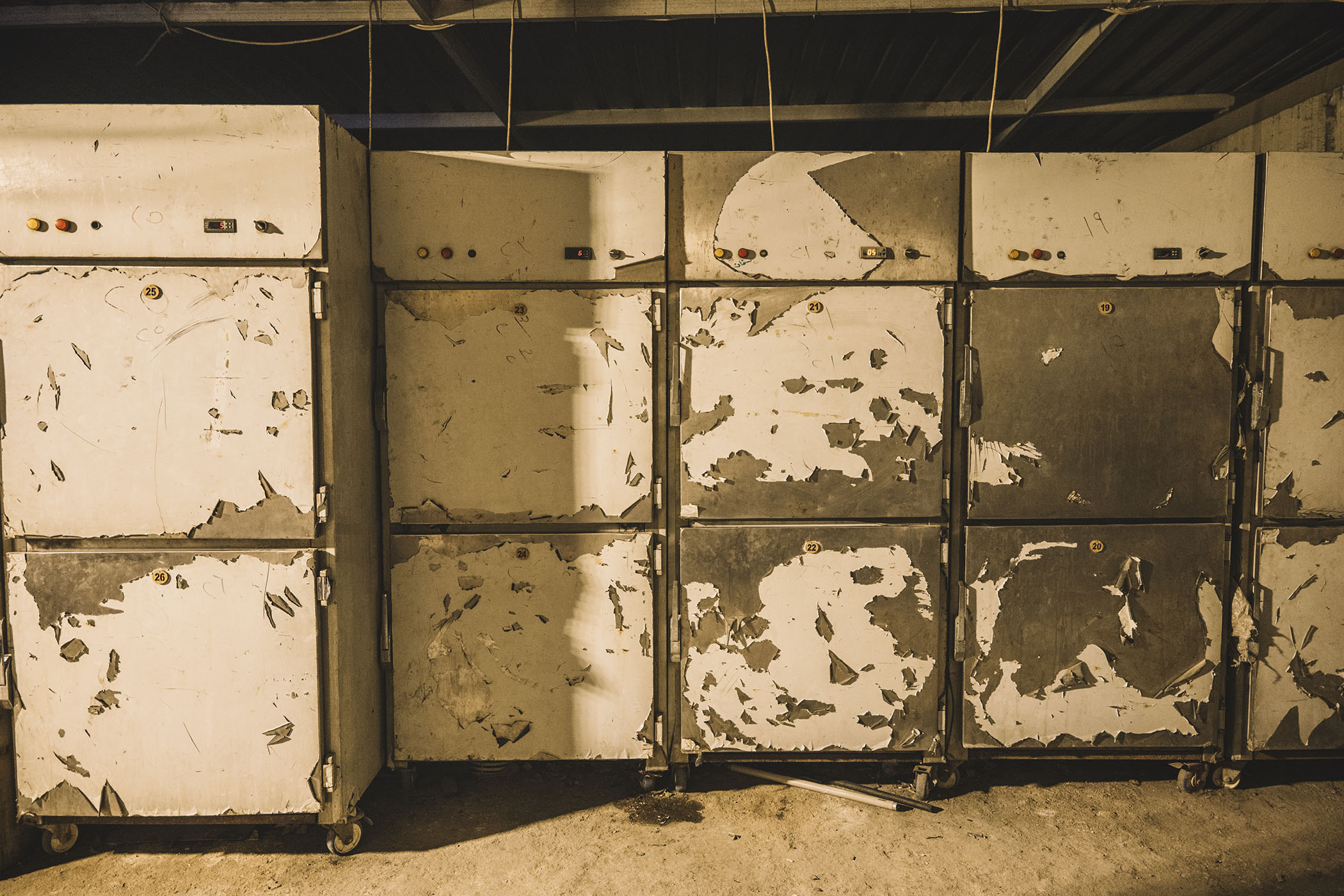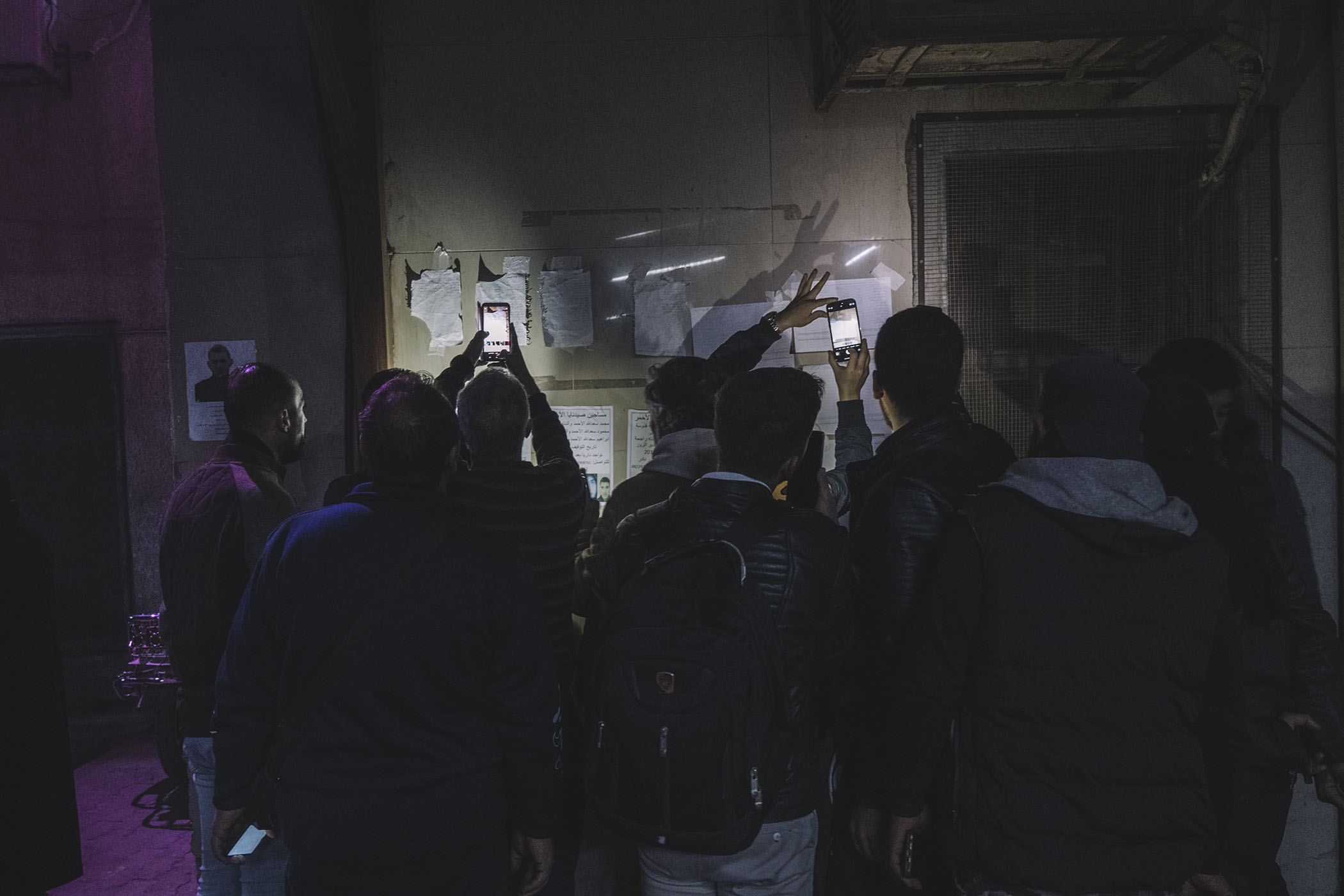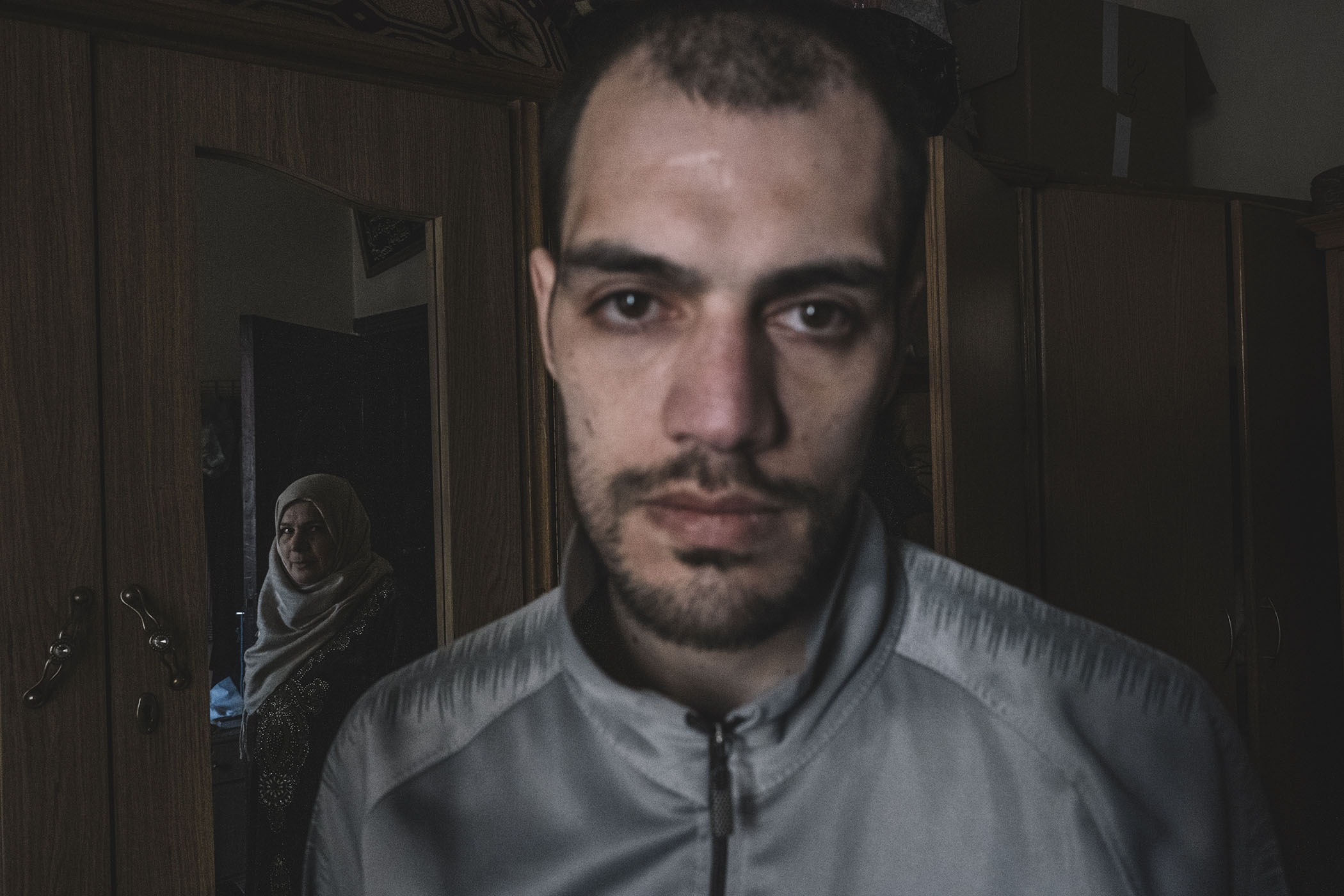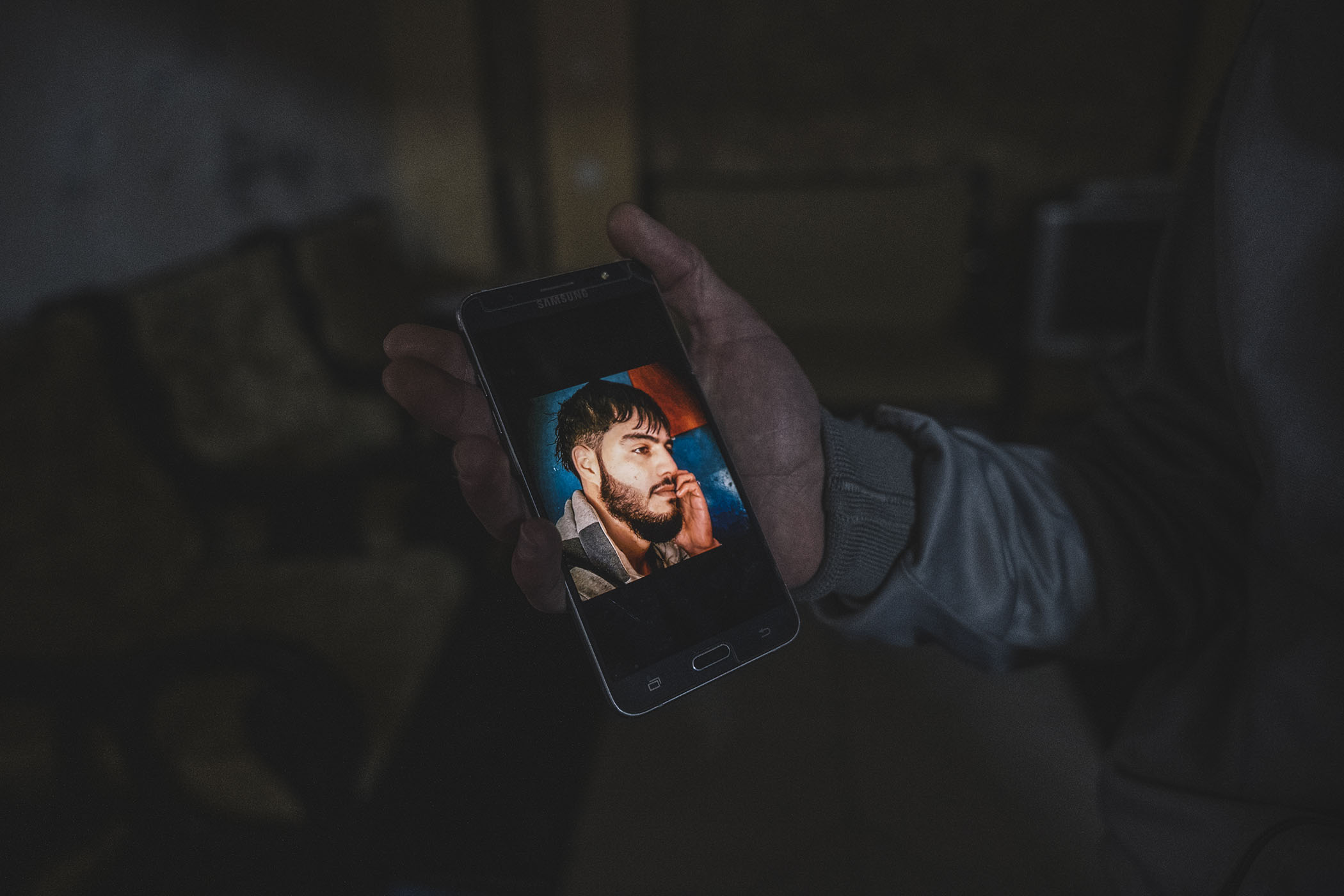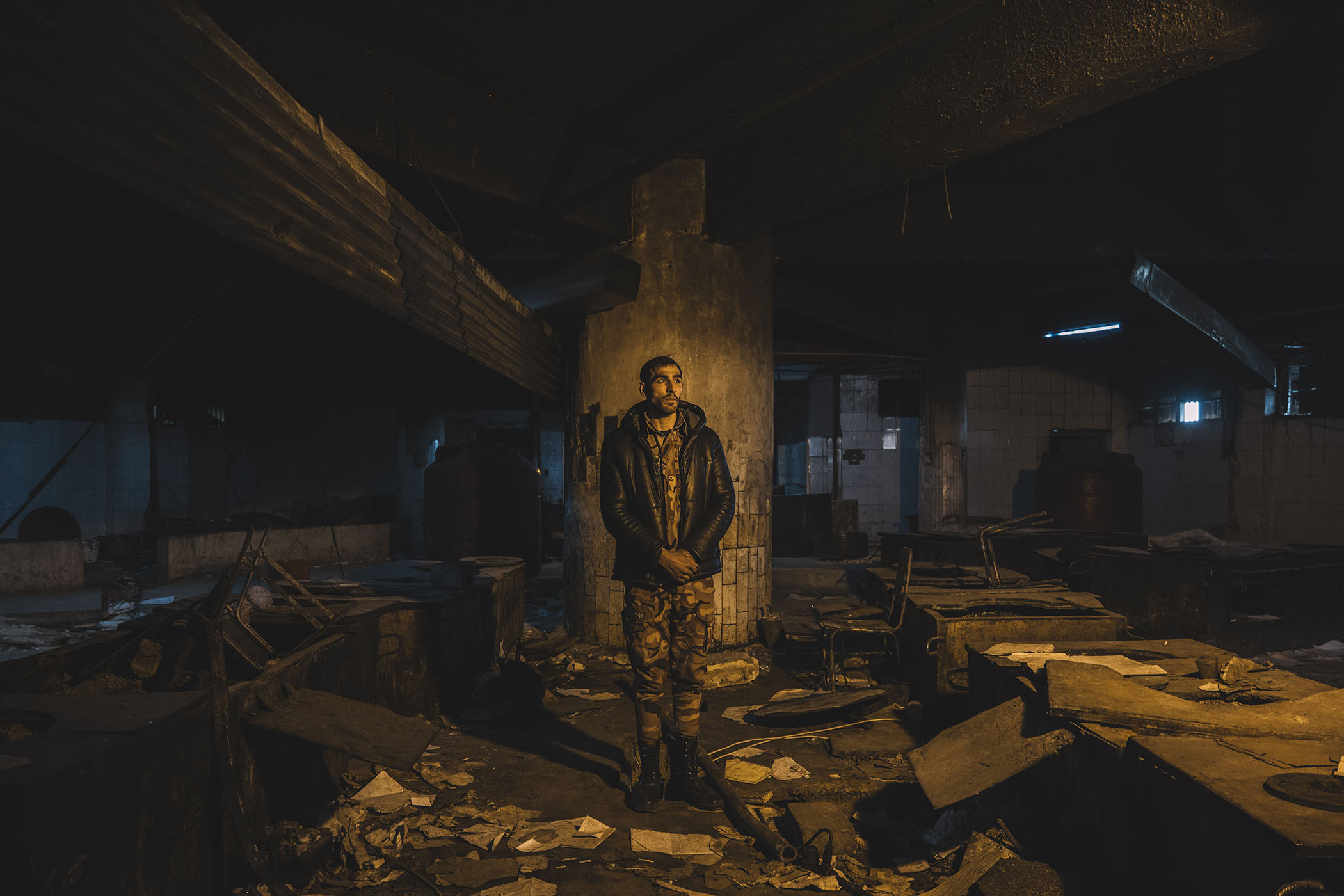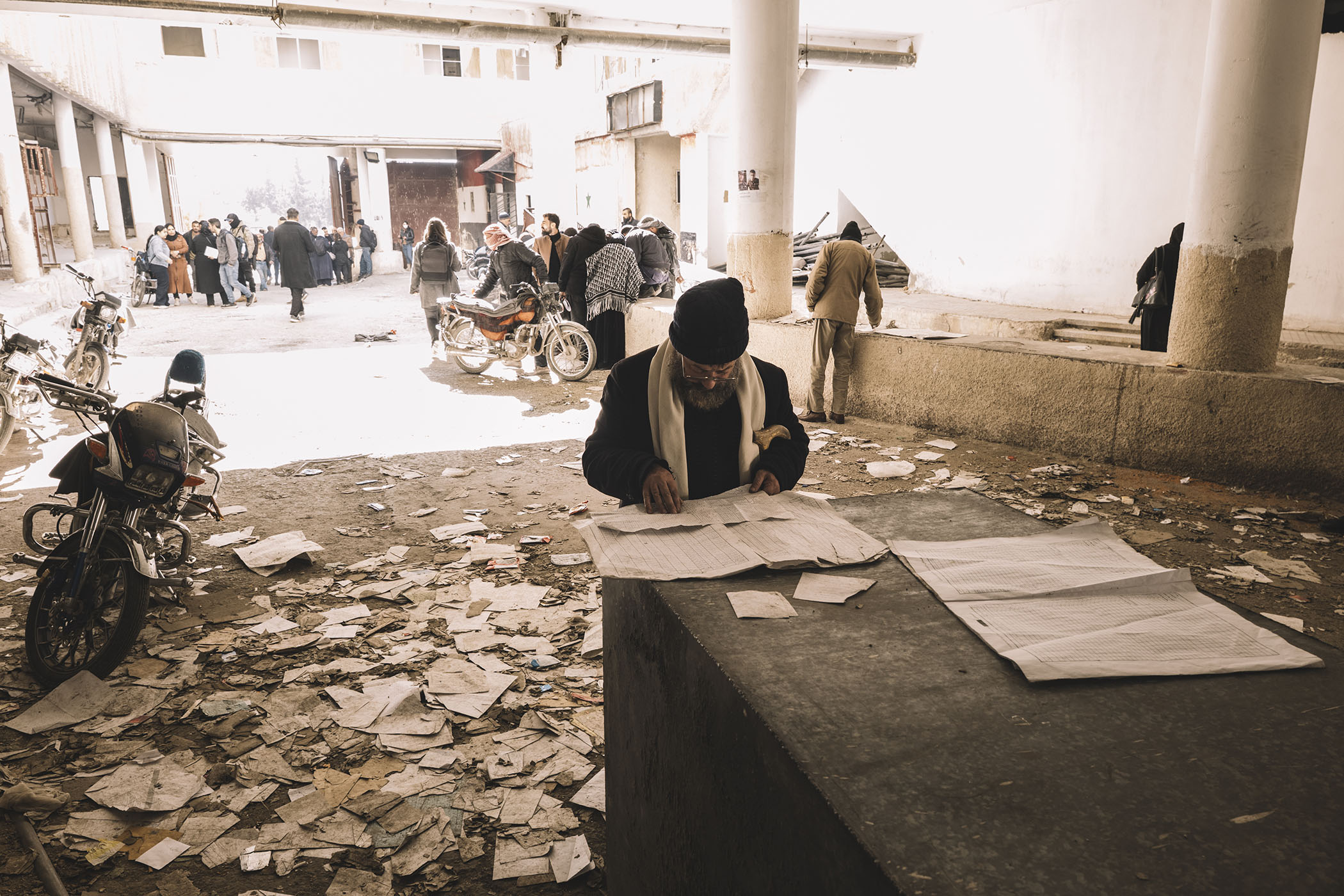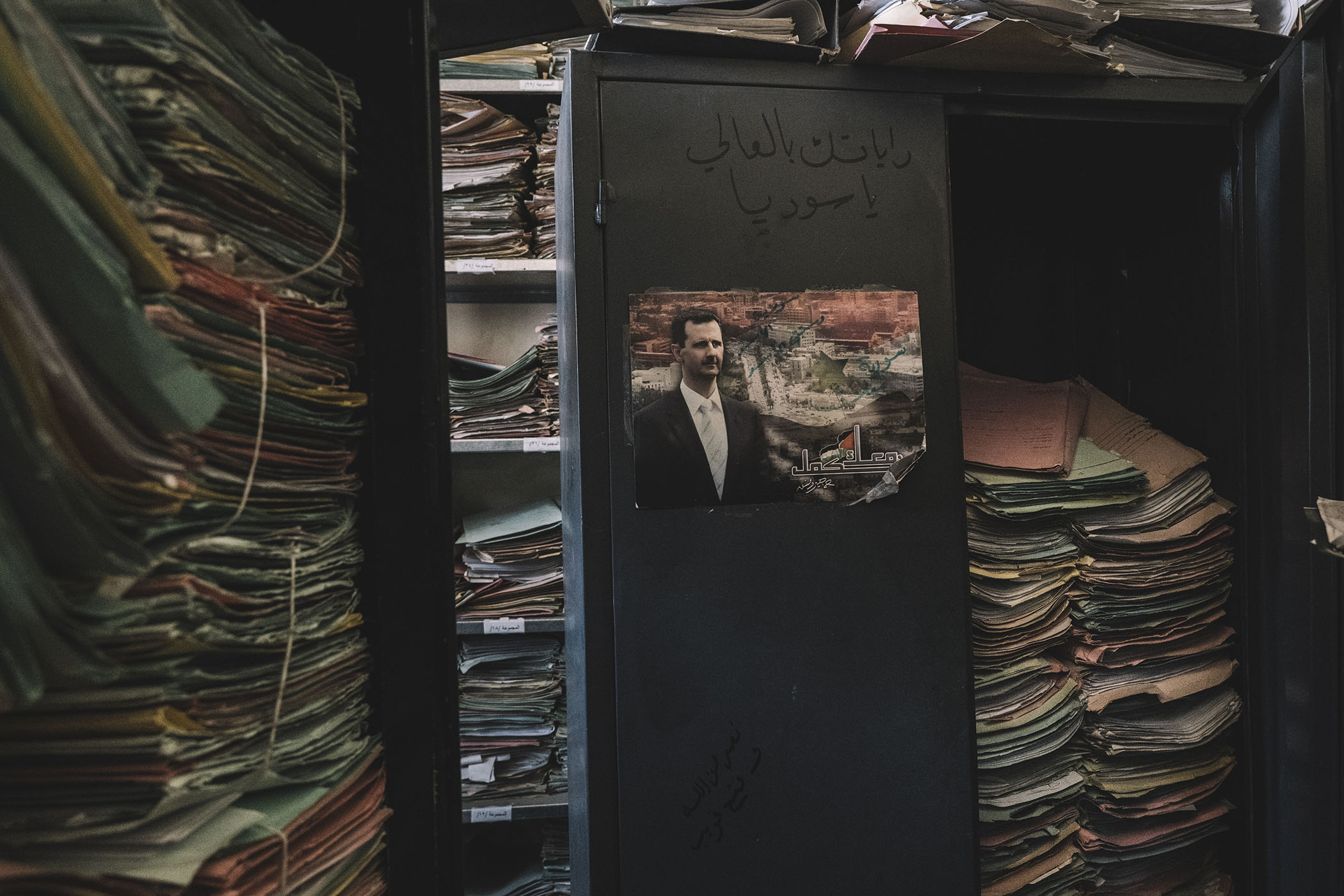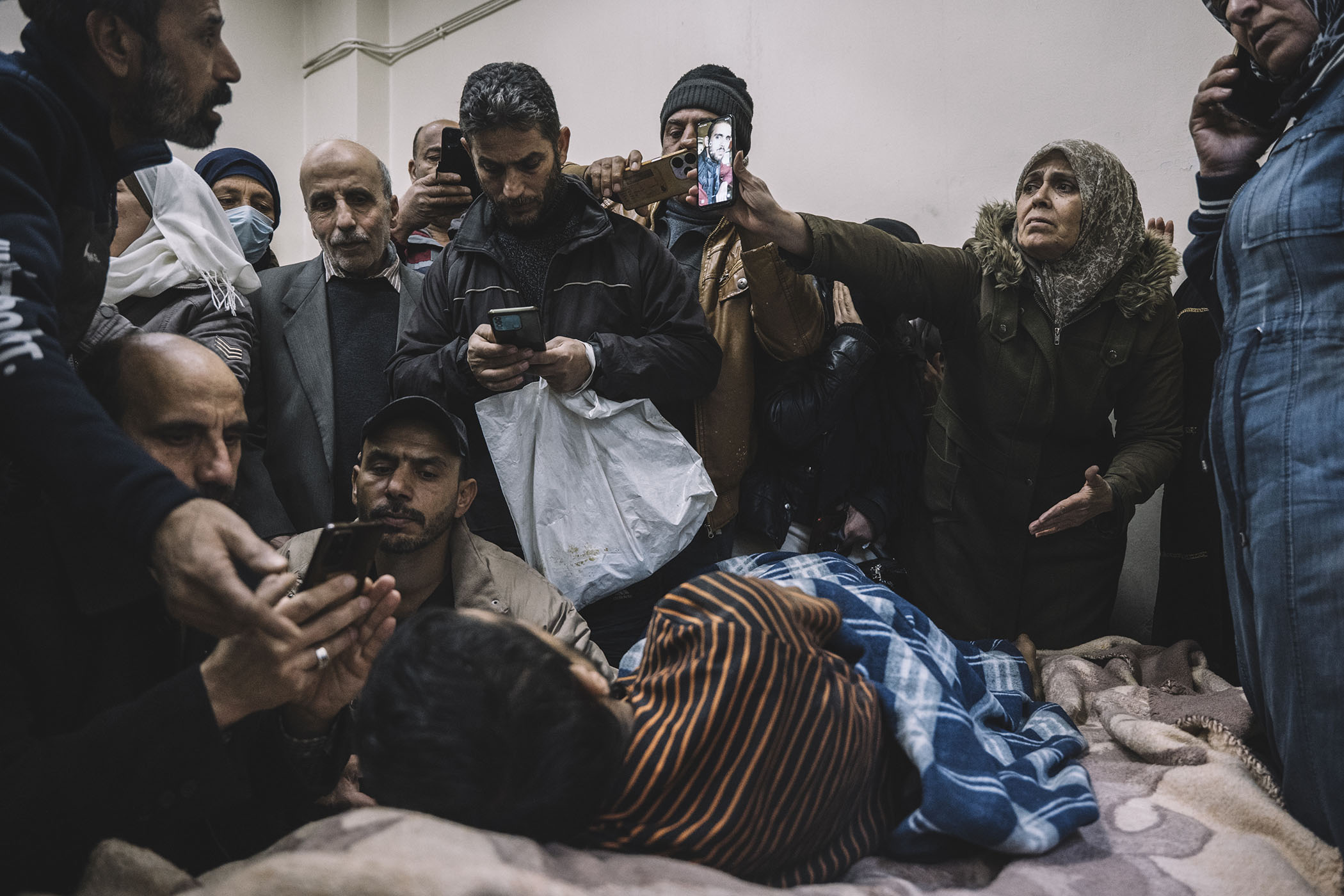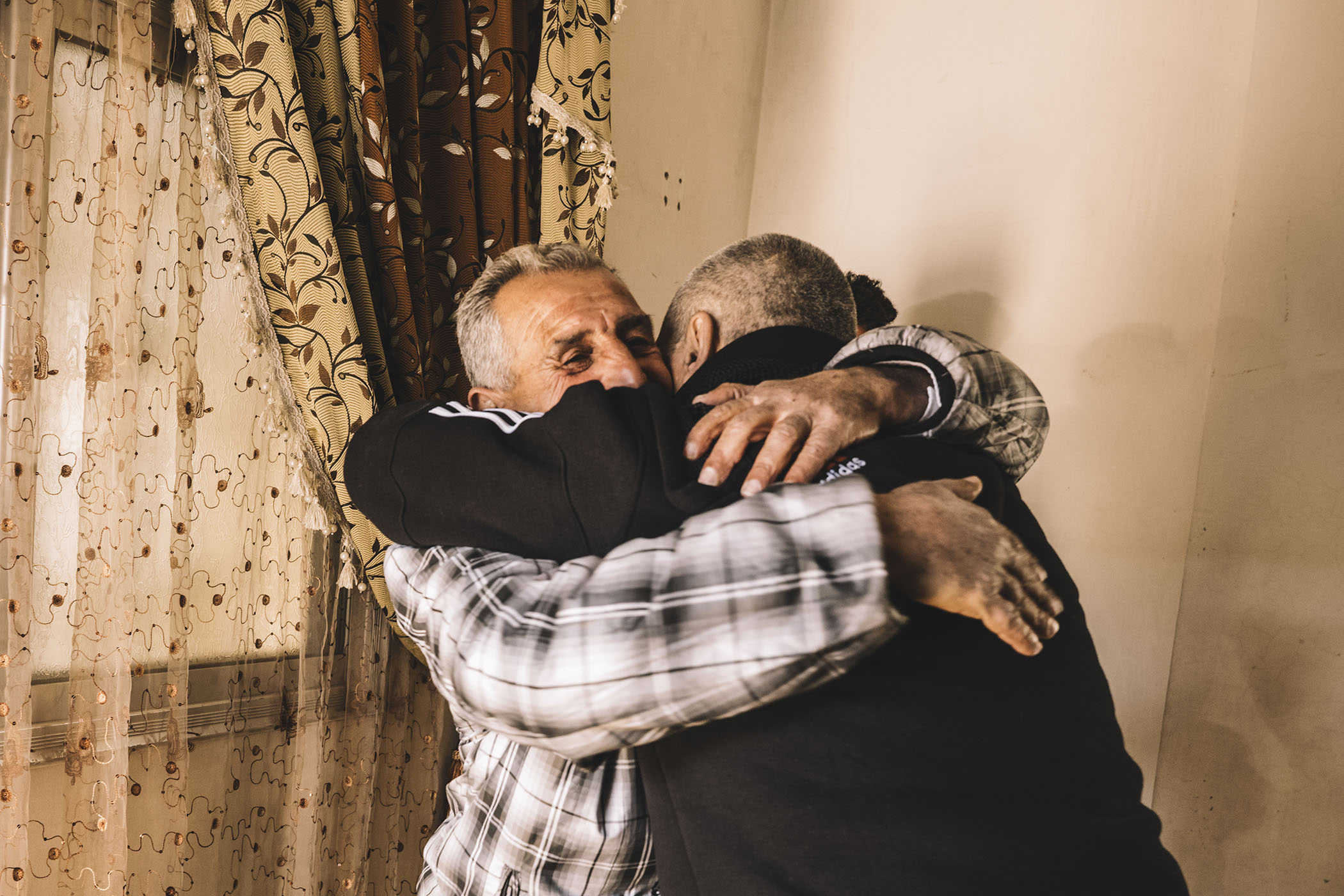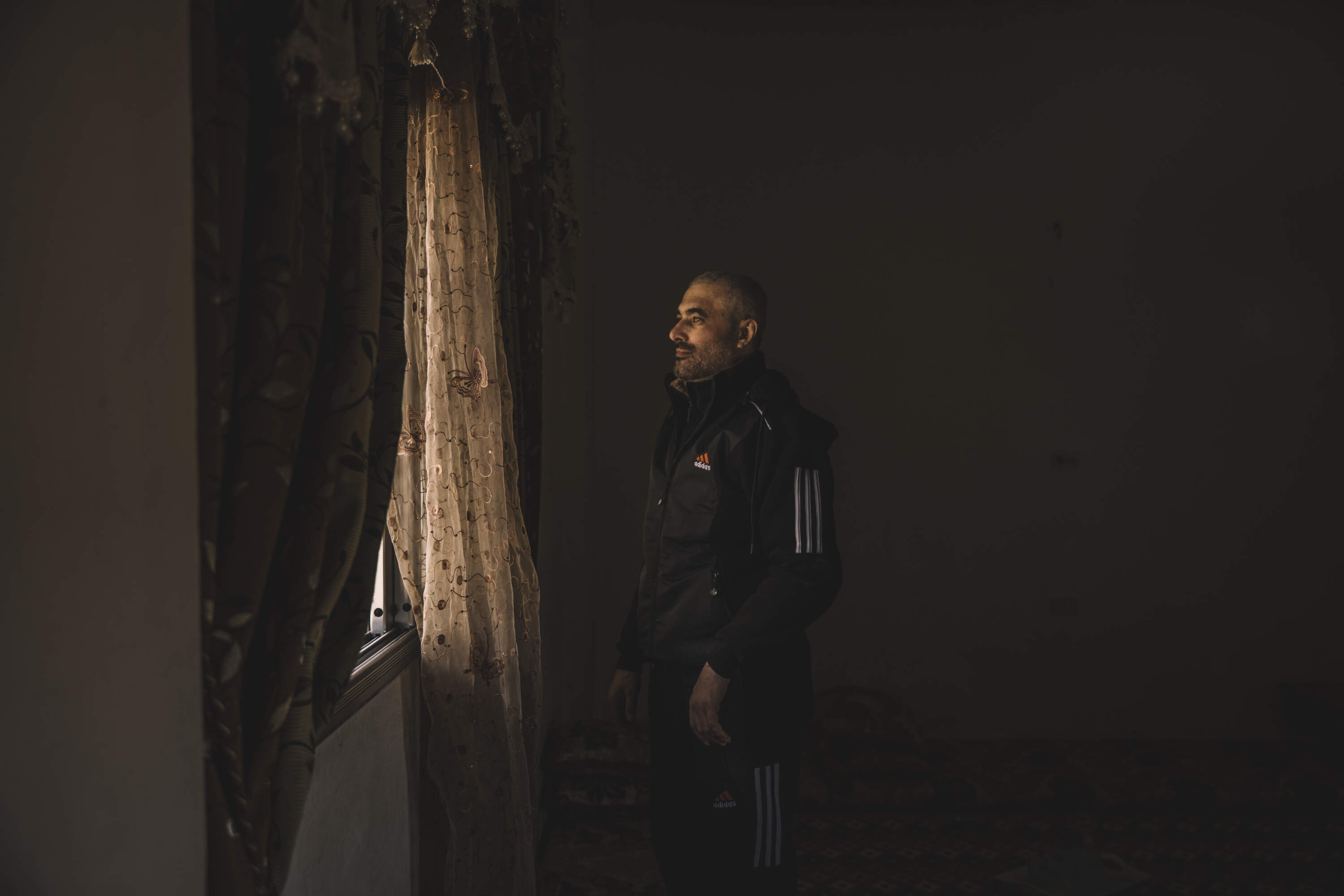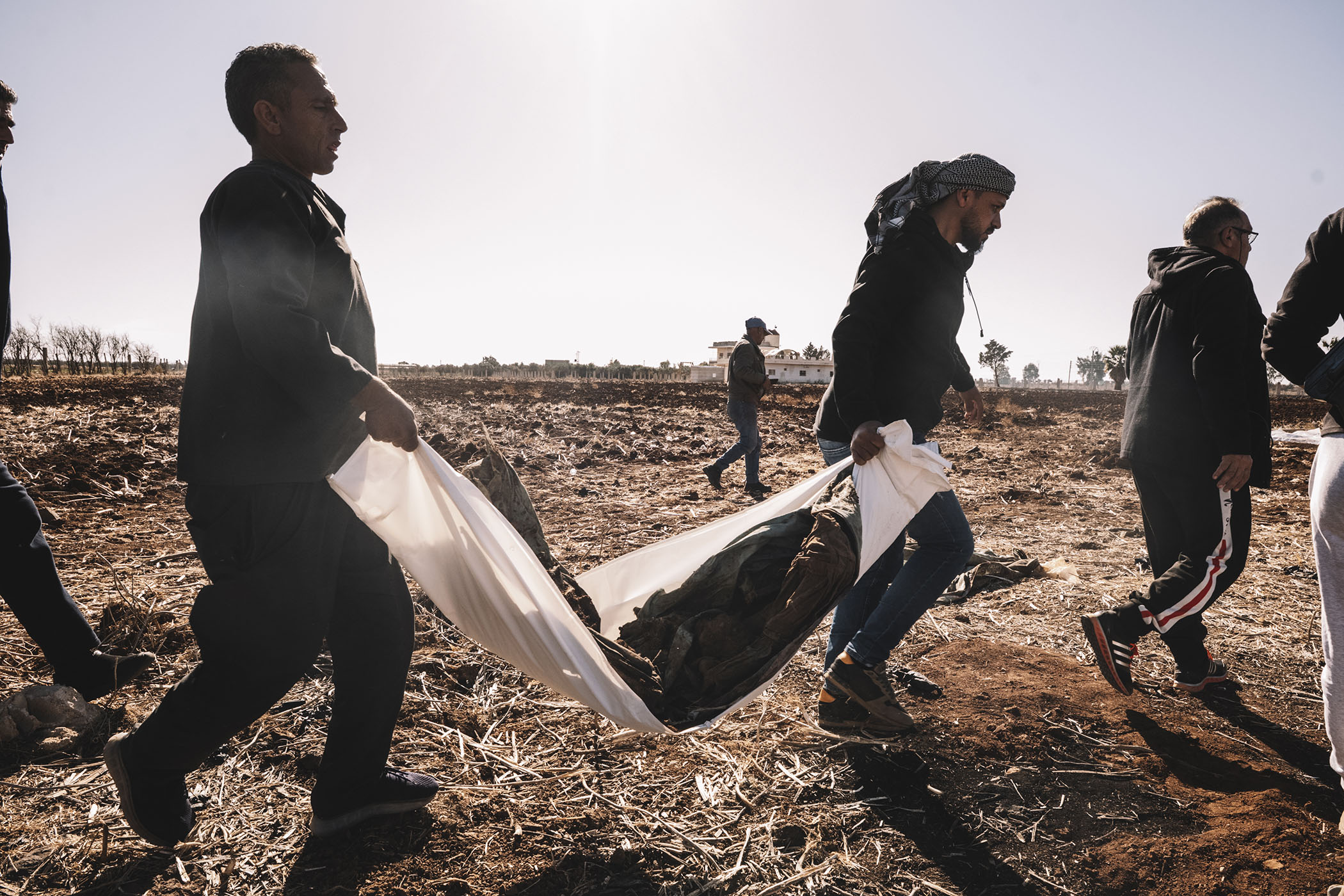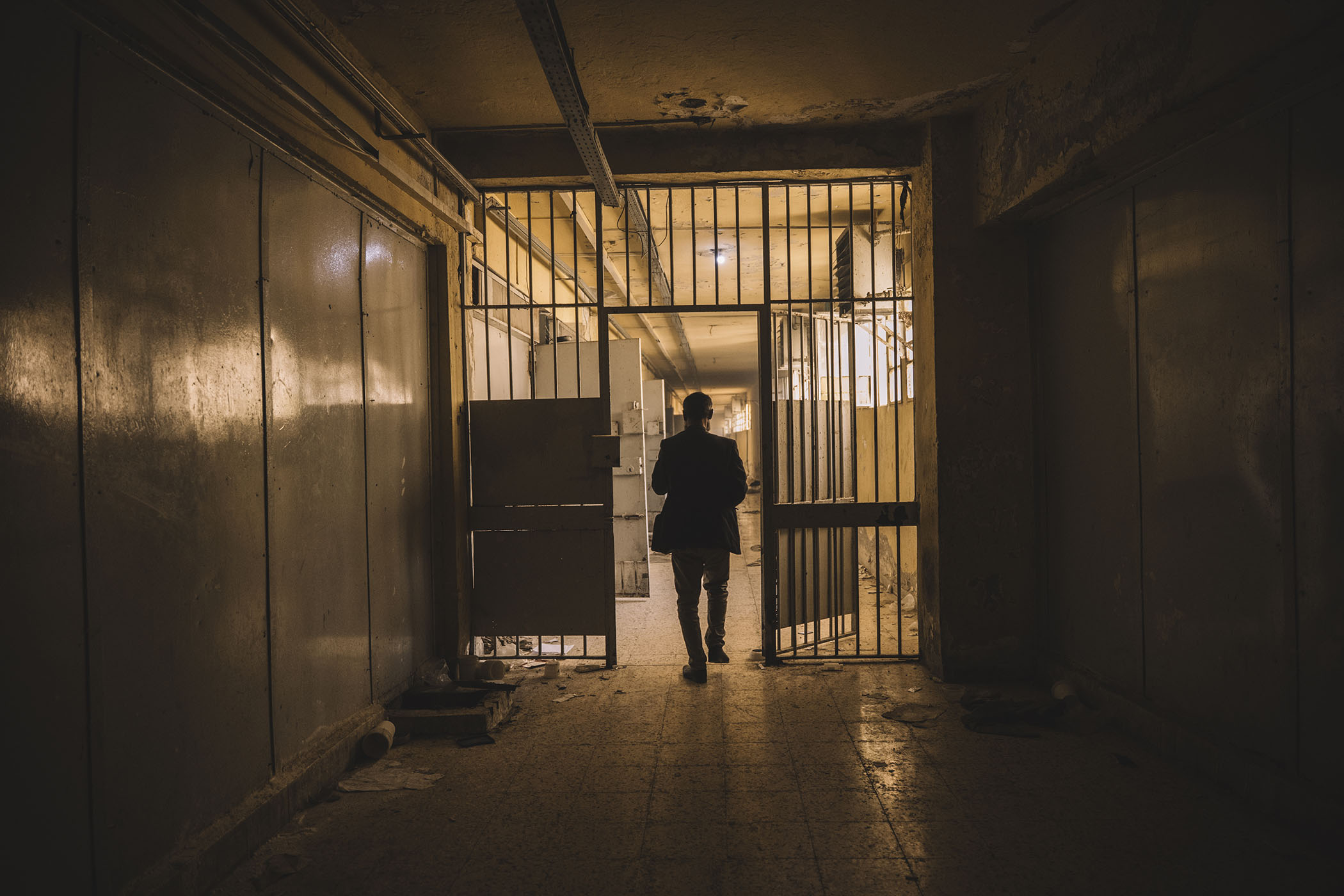On 8th December 2024 Syria's long civil war reached an unexpected turning point - a rebel offensive reached Damascus and President Bashar al-Assad fled Syria. It marked the end of more than 50 years of the Assad family's rule and brought hope that the conflict that began in 2011 was drawing to a close but before Syrians could contemplate a brighter future they had the task of confronting the country's painful past. It remains an ongoing process.
A woman collects documents left behind by the regime at Sednaya prison in order to preserve them after the prison was opened and the inmates released following the fall of the al-Assad regime.
Young male protesters gather in front of the coffin of Syrian opposition leader Mazen Hamadi whose body was found in Sednaya prison morgue on the 9th December 2025 after the fall of the Assad regime. He had originally been imprisoned and tortured after anti government protests in 2011. He was exiled and sought asylum in the Netherlands testifying to the abuse he suffered and witnessed for which he became internationally known. In 2020 he was tricked into returning to Syria, arrested on arrival and not seen again until his body was found.
Aerial view of Sednaya prison, one of the most notorious detention centres in Syria, known for mass executions and torture.
For Hohamed Khaled Krayem, Ayham Jahmani and Hosni Diab the early hours of December 8th 2024 brought fear. From their cells in Syria’s notorious Sednaya military prison they heard noises in the distance which didn’t fit with the regular prison routine. They had experienced the horror long enough to know that any deviation from the norm, especially at night could only signal the beginning of torture or an execution. As the shouts got closer they huddled at the back of their cells fearing for their lives but then the doors were forced openaccompanied by shouts of Allahu akbar. It was not their jailers who entered but young men with beards and rifles.
“is anyone here? you can come out!”
“by allah, do not deceive us” the prisoners said
“you can go home. you’ll have dinner with your mothers tonight” came the reply
Those who could walked free – Mohamed and Ayham ran out of the prison but Hosni after six years of torture, starvation and now suffering from TB was so ill he couldn’t stand up - two companions had to help him out of the cell. All three had suffered unimaginable torture during their time in Sednaya.
Hosni Diab stands shirtless in his parents' home. He was imprisoned for years by the Assad regime in Sednaya and was released in critical condition, emaciated and suffering from tuberculosis.
Rebel forces freed inmates from a vast network of detention centres, with the much-feared Sednaya military prison at its core. Survivors’ accounts revealed the extent of the Assad regime’s systematic detention, torture and secret execution of its opponents, which transformed its already brutal prison system into a weapon of war. With the fall of the regime, the prospect opens up of determining, with evidence, documents, and testimonies, the true extent of the human rights abuses and extra-judicial killings whose contours are only just beginning to emerge.
Aerial views of the Yarmouk neighbourhood, once home to the largest Palestinian refugee community in Syria. The district, located on the outskirts of Damascus, was almost entirely destroyed during the war.
The Umayyad Mosque, its walls covered with posters of missing persons as families search for their loved ones.
A beam of light shines through one of the corridors in Sednaya prison after it was opened and the inmates released following the fall of the al-Assad regime.
Under the Assad regime there were more than 100 detention facilities around the country. Sited in security compounds, military airports, and under buildings, they were run by four different military, security, and intelligence agencies, which worked independently of each other, with no clear boundaries to their areas of jurisdiction.
Ordinary people – from demonstrators and journalists, to labourers, taxi drivers, and humanitarian workers – were used by the regime to send a chilling message to the entire population. Through arbitrary arrests, executions, and torture, the regime waged war against its own people, placing them in the grip of terror and secrecy. It was a psychological and physical battleground where Assad very nearly won the war. Prisoners faced inhumane conditions, including starvation, untreated wounds, and psychological trauma from overcrowding and lack of sunlight. Thousands perished, subjected to brutal beatings, rape, and electric shocks, often to extract forced confessions, but also simply to punish, intimidate, or humiliate them.
A former Sednaya prison inmate, recovering in the Ibn al-Nafis hospital, is surrounded by people asking whether he recognised their missing relatives.
A view of a staircase and the interior of Sednaya prison where members of the public were able to access the building after it was opened and the inmates released following the fall of the al-Assad regime.
Najwa Ali, from Daraa province, searching for her husband, Munahi Mwafaq Ali, who was detained twelve years ago by the Syrian regime for allegedly being part of the opposition. After the fall of the regime and the release of prisoners, thousands of families began searching for their loved ones in Sednaya Prision, Damascus
Human Rights groups estimate at least 150,000 people went missing over the years of the civil war, most vanishing into this prison network. Many were killed, either in mass executions or from torture and prison conditions, but the exact number remains unknown.
An interrogation and torture room inside the Palestinian Branch, a military intelligence prison that was briefly open to the public after the fall of the regime.
the interrogator warned me, ‘you will see Allah in colour’
A family inside Sednaya prison as they search for a missing relative.
A group of people investigate the prison after it was opened to the public and the inmates released following the fall of the al-Assad regime.
A solitary cell inside the Palestinian Branch, a military intelligence prison that was briefly open to the public after the fall of the regime.
Hosni Diab's father helps him up a step at their family home. Hosni is unable to move with ease after years in Sednaya, where he contracted tuberculosis and was denied proper care.
Hosni Diah was initially held in the notorious Palestinian Branch detention centre.
The interrogator deceived me, telling me they would release me if I confessed to belonging to a rebel group. They beat me again with my eyes covered. They tore off my clothes. In the end, under torture, I confessed that I was an armed rebelThey took me to another prison and there they beat me even more. As a result, I lost my left ear. No one dared touch me, because my body was no longer blue but black from the torture they subjected me to, which included electric shocks.”
Men gather at the entrance of the morgue in Ibn al-Nafis hospital, scanning the dead for missing family members.
Refrigerators in the morgue of the Ibn al-Nafis hospital, where hundreds of bodies recovered from Sednaya prison were stored.
Relatives of the disappeared photograph lists of names taped to a wall at Ibn al-Nafis hospital, hoping to find information about their missing loved ones.
Mohammed Khaled Krayem, just after he was released from Sednaya prison following the fall of the al-Assad regime, stands next to his mother, Fatima, in one of the rooms of her house. His teeth are broken and has no hearing in his left ear after repeated beatings in prison.
“During his (Mohammed Krayem's) imprisonment, I had to sell everything, including our house,” says his mother Fatima. “We had to pay bribes to find out where he was. Two days before the fall of the regime, we paid 150 million pounds [just over 10,000 euros] to have him taken to Adra [a civilian prison]. Now his teeth are broken and he can't eat.”
Most of the families of the prisoners interviewed admit, in one way or another, to having paid the dictatorship. They sought to free the prisoner or to get them transferred to a prison where treatment was better or simply to find out if they were still alive. Often, these efforts were in vain; sometimes (rarely) they succeeded. The bribes outlined a network of patronage in which mid- and high-level officials and unknown intermediaries who claimed to be able to extract information from prisons enriched themselves at the expense of desperate families. The rottenness of the regime, with civil servants stifled by low salaries in a context of civil war and international isolation, encouraged corruption at every level of bureaucracy.
Mohammed Khaled Krayem shows a photo of himself before he was imprisoned.
Mohammed revisits Sednaya prison, where he was imprisoned for years. He walks through the cell block where he was held.
A woman searches through the bodies of former Sednaya prisoners in a temporary morgue set up at Ibn al-Nafis hospital, hoping to find her disappeared relative.
A man sifts through paperwork scattered across Sednaya prison, looking for the name of a disappeared relative. Sednaya, Syria.
A records room in the Palestinian Branch, a military intelligence prison that was briefly open to the public after the fall of the regime, containing files of people under surveillance, with a photo of Bashar al-Assad taped to the cabinet door.
Families crowd around a released detainee recovering in the Ibn al-Nafis hospital, showing pictures and asking for news of their missing relatives.
Ayham, who spent six years and four months in Sednaya prison, and was shot in the arm during the first protests against the regime, hugs his uncle for the first time after his release.
Ayham, who spent six years and four months in prison, was shot in the arm during the early protests against the regime. He poses by the window in his mother's house after being released.
The tools used to excavate the mass grave in Izra.
Men carry one of the bodies found in a mass grave in Izra, where dozens of corpses were discovered on 16 December 2024.
A man walks through the cells at Sednaya prison after it was opened and the inmates released following the fall of the al-Assad regime.
“During captivity, since I couldn’t say anything, I felt tortured inside,” Mohamed says. “Now I can speak.”

